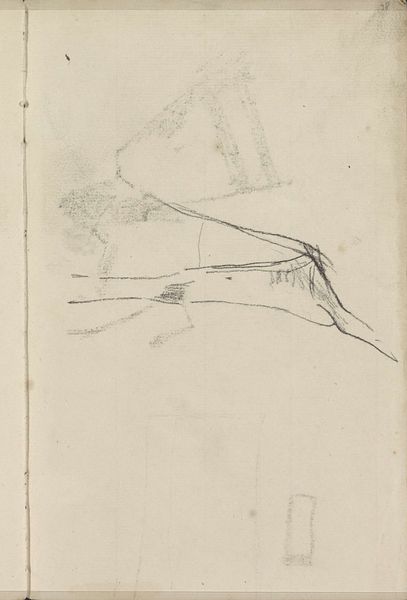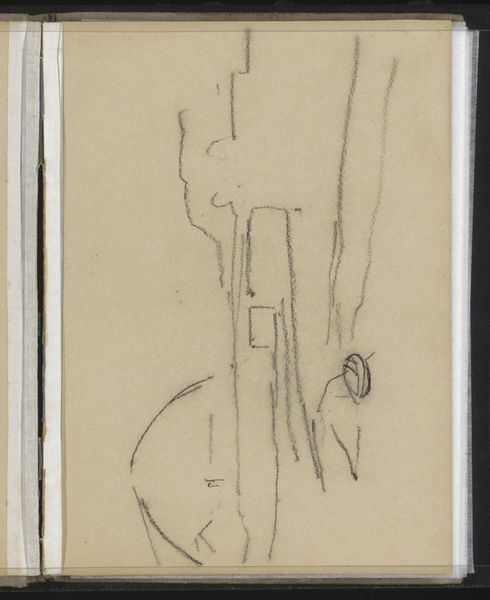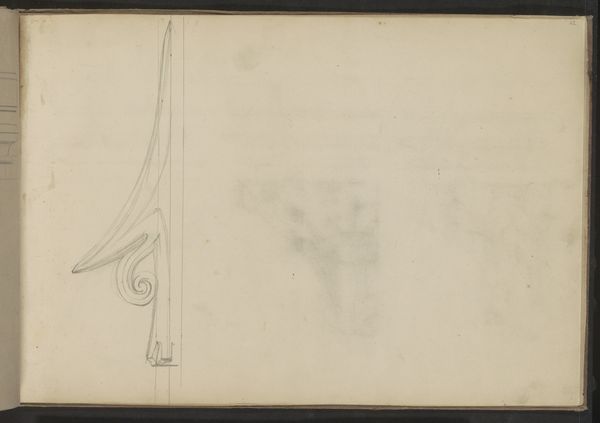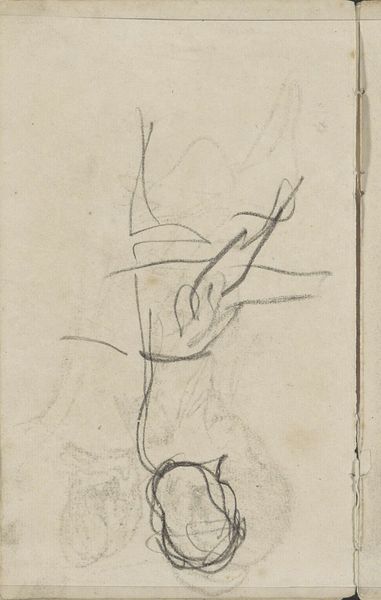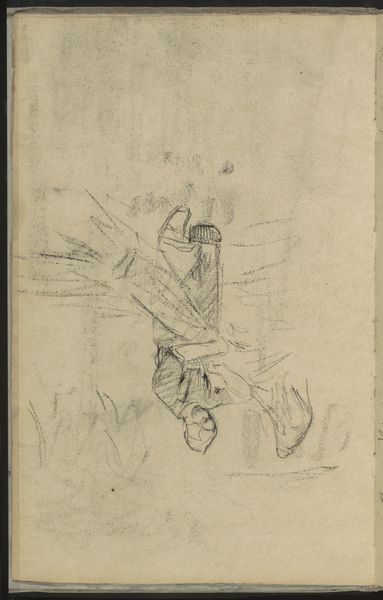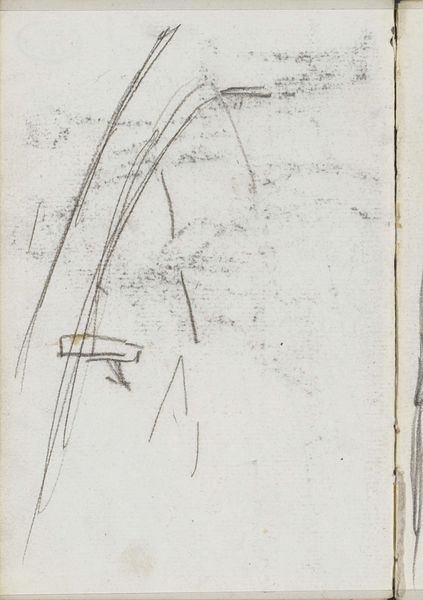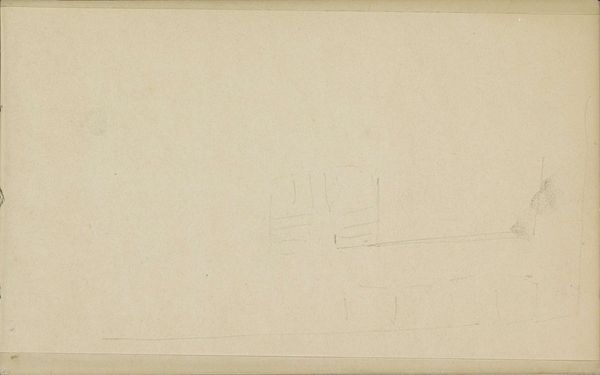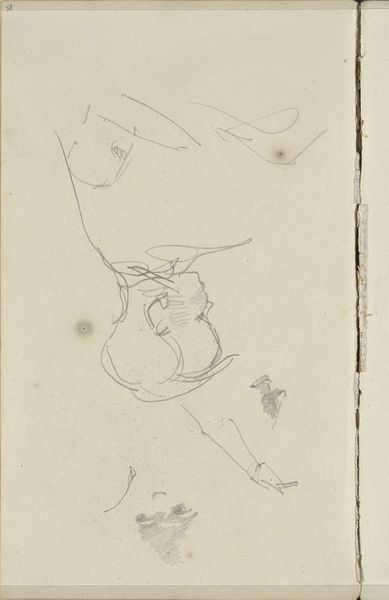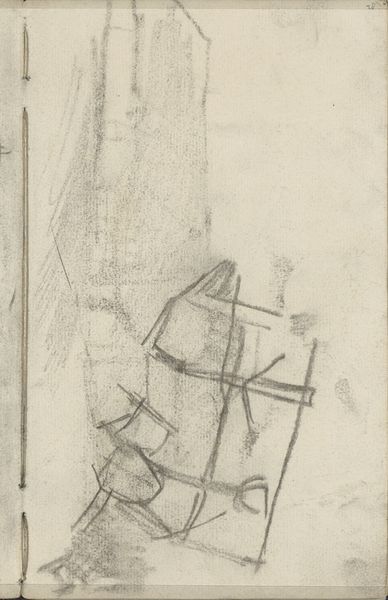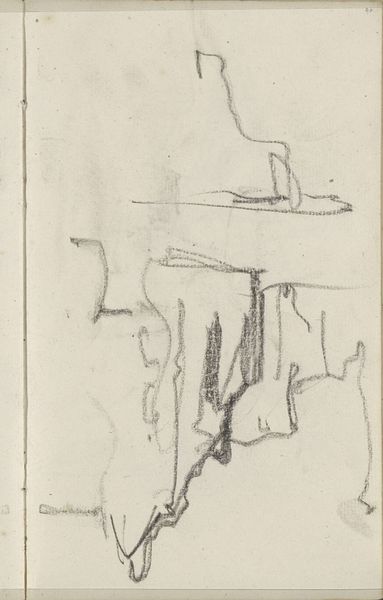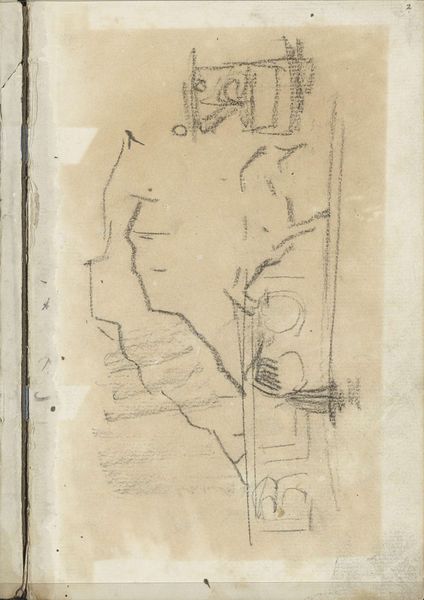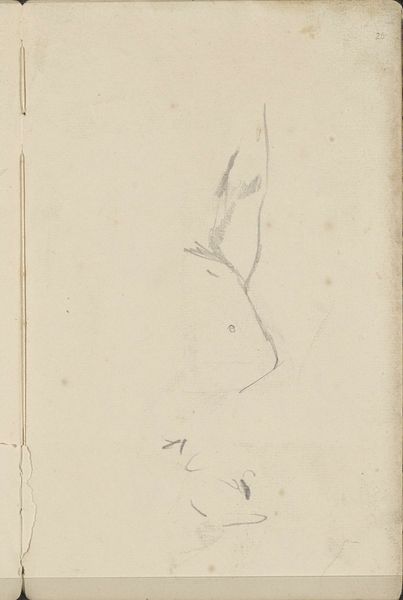
Dimensions: height 220 mm, width 141 mm, thickness 9 mm, width 286 mm
Copyright: Rijks Museum: Open Domain
Curator: This is Cornelis Vreedenburgh’s "Sketchbook with 41 sheets," dating roughly from 1890 to 1946, residing here at the Rijksmuseum. It’s primarily crafted from paper and pencil, displaying traits of Impressionism. What catches your eye? Editor: Immediately, a sense of the mundane, of the everyday work of an artist. That fabric cover, the simple tie—it feels less like precious art and more like a functional object, well-worn and intimate. I see that vague numbering on it, what does that mean in relationship to the contents of the pages within? Curator: Precisely. The use of commonplace materials, especially the binding itself, invites us to consider the accessibility of art-making. Paper and pencil were relatively inexpensive and portable, enabling artists like Vreedenburgh to capture fleeting moments and scenes wherever they found themselves. Editor: And what do these fleeting moments capture? I imagine countless sketches within this book. Do those pages hint at artistic intentions or preferred themes from Vreedenburgh? Are they casual notes or serious symbolic gestures? Curator: Many believe Vreedenburgh mainly dedicated this type of book for capturing landscapes and cityscapes in a manner inspired by Impressionism, and which later served as preliminary works. They served as raw material, informing larger, more finished compositions. Also consider the value of the sketchbook within art education at the time and in today's world; sketchbooks often serve to provide freedom and documentation without much expectation or heavy meaning placed on the artworks. Editor: You're right, I suppose the impressionistic style is also prevalent, then. That suggests more than just a snapshot; it implies an emotional and subjective response to the world. Maybe those seemingly random street scenes, the angle of light or the curve of the architecture carry subconscious messages that reflect social norms. Curator: Certainly. I am struck with your last observation as the sketchbook form can serve as an intimate visual diary to decode how certain buildings or urban situations may evoke feeling. Editor: It reframes how we perceive art, moving away from the grand narrative towards valuing the humble process. I never considered before today, now valuable information a material like this would hold in regard to time. Thank you. Curator: And my understanding on this piece's historical relevance expanded a bit today as well. It is these explorations that keep conversations about art alive.
Comments
No comments
Be the first to comment and join the conversation on the ultimate creative platform.

